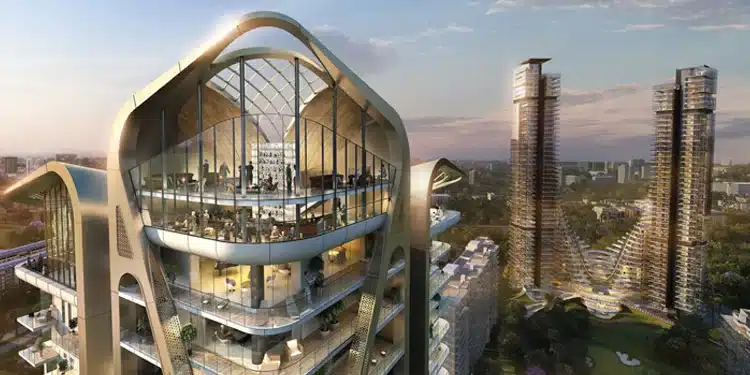WFM: Please give us a brief introduction of your fim and a few of your recently completed important projects.
Jonas Upton-Hansen: UHA is an international architecture and design studio based in London. The firm was founded in 2011 with an initial focus on luxury residential projects in London and grew rapidly to undertake larger-scale projects across Europe, Asia and the Americas including countries such as China, India, Mexico and Russia.
Recent projects include a 20 million Sq ft mixed-use master plan in central Moscow on the historical ‘Hammer & Sickle’ steelworks; a 160m tall luxury office tower and hotel in downtown Mexico City and a corporate headquarters in Shymkent, Kazakhstan.
In India, UHA is involved with a significant number of prestigious projects: in Gurgaon – the Michael Schumacher World Tower for Homestead; a series of projects for M3M Group including the St Andrew’s Tower, Escala Urbana Premium and Satya’s Element One mixed-use retail and residential project – all of which are currently under construction. In Delhi, we are designing a 180 m tall luxury residential tower for the Unity Group and in Mumbai we are involved with the Worli 1973 high-rise residential development by Omkar which is at an advanced stage on site now reaching over 250 m. We have a second project underway with Omkar and are currently designing another triple-tower residential scheme in Wadala for RNA Corp as well as significant projects with Piramal, Sunteck and Sheth developers.
WFM: Tell us briefly about evolving trends in façade & fenestration designs.
Jonas Upton-Hansen: Trends are constantly changing and evolving based on performance and customer and client requirements. Different markets have distinct trends that are rooted in both historical and cultural norms, which evolve due to changes in building regulations or other factors.
For the high-end market, prestigious projects look to their competitors in key cities that have established epochal buildings and seek to borrow from their opulence and material palette. As such many new high-rise buildings are stretching the sizes and process limits of the materials available to provide a grander aesthetic.
Though curtain walls can be designed for quite stringent fire ratings and are generally the default solution for high-rise buildings worldwide, they are not necessarily commonly used on residential buildings in India.
WFM: Please elaborate on innovative materials used for façades.
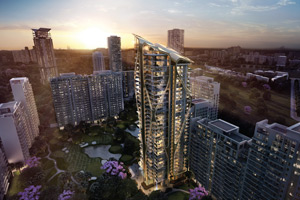
Jonas Upton-Hansen: There are a large number of new products coming onto the market, some of which are very exciting. Progress in concrete with products such as Ultra-High Performance Concrete – which is a very high strength concrete that can be used in a variety of ways, particularly for prefabricated panels – and light-transmitting concrete offer exciting opportunities.
There are also amazing glass products available including photovoltaic glazing panels, intumescent glazing systems, dichroic glazing, glazing with integrated sun control louvers, an electrochromic glass that changes from clear to opaque in second and future glass materials such as ‘Kinetic’ glass which can curl or open in response to changing environmental conditions to name few.
The usage of single and multi-layer ETFE (Ethylene Tetrafluoroethylene) ‘cushions’ are now more prevalent, providing external envelope solutions that are extremely lightweight and durable against UV sunlight degradation and are highly resistant to pollution. The cushions also provide the same flexibility for fritting and printing as conventional glass supply.
Other materials to note are compound curved ceramic tiles, Corian façade panels, and ‘sci-fi’ materials such as thermo-formed plastic tiles coated in powdered photocatalytic titanium dioxide which scrub pollution from the air.
WFM: Is there a distinct preference in design and materials for façades of residential, commercial, public and institutional buildings?
Jonas Upton-Hansen: Our philosophy is that the façade should always reflect the nature and scale of the building it wraps. Different programmatic uses require different performance criteria. The code requirements for a residential façade for example are quite different from the requirements for a commercial façade in terms of daylight requirements, natural ventilation and fire separation. Residential buildings may also have terraces, balconies and utility platforms which may not be needed in a commercial or institutional development. Ventilation and conditioning requirements also typically affect building façades and choice of materials in India.
WFM: Double skin façade is being used in many buildings in the west for thermal control, but not so popular in India. Why?
Jonas Upton-Hansen: There are several reasons why double-skin façades are not overly popular in India. The principal reason is undoubtedly cost, as India is a very cost-sensitive market.
Double skin façades can be significantly more expensive than single skin façades depending upon their complexity, and there is generally a marked increase in material and component cost as well as the cost and method of installation. While there are proprietary designs available on the market, most double-skin façade designs are bespoke in nature to suit both the building geometry and architectural aspirations of the project. Due to supply and demand, the pool of specialist contractors in India offering double skin façades is also smaller for these reasons. However, double skin façades can offer far superior thermal insulation properties, more effective means of solar control and are generally more resilient, hence life-cycle costs are potentially reduced.
In order to see a paradigm shift in the national market, clients will need to look closer at their budget assessments and programmes if they wish to be pioneers in a new generation of more iconic building designs.
We work closely with a number of specialist façade engineers, such as Corona Façade Engineering, to develop all aspects of the building envelope. As local expertise in façade and environmental engineering grows, the modelling of the energy performance of buildings will become more commonplace in India and hence give rise to a better understanding of the potential energy savings that can be made using double skin façades. True double façade buildings with walk-through accessible cavities used in high-end office buildings and cultural buildings in the rest of the world are virtually unheard of in India.
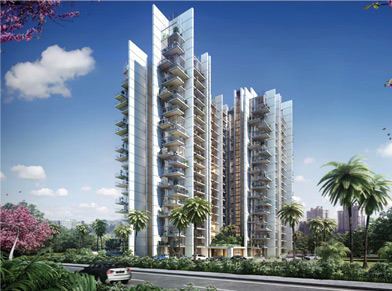
Central Moscow’s redevelopment plan – Serp and Molot(1)
WFM: Other than glass, have you found any new materials used abroad that could be used effectively in India?
Jonas Upton-Hansen: Glass Reinforced Concrete (GRC) is used widely in Europe but is still relatively new to the Indian market. The material and technology is proven, cost-effective and can give a very clean external finish. Its more common premixed and sprayed applications, newer forms of GRC panels are available within inherent extruded glass fires which increase overall strength, reduce the overall thickness and weight of the panel to a third and provide a good surface finish to both sides of the material. These can be integrated directly into rain screen façade systems or ‘slumped’ during fabrication to form more complex shapes akin to ceramics and terracotta. An example of iconic use would be the ‘Calabash’ Stadium in Johannesburg, completed in 2010 for the FIFA World Cup. GRC is definitely a material we will be specifying on some of our upcoming Indian projects.
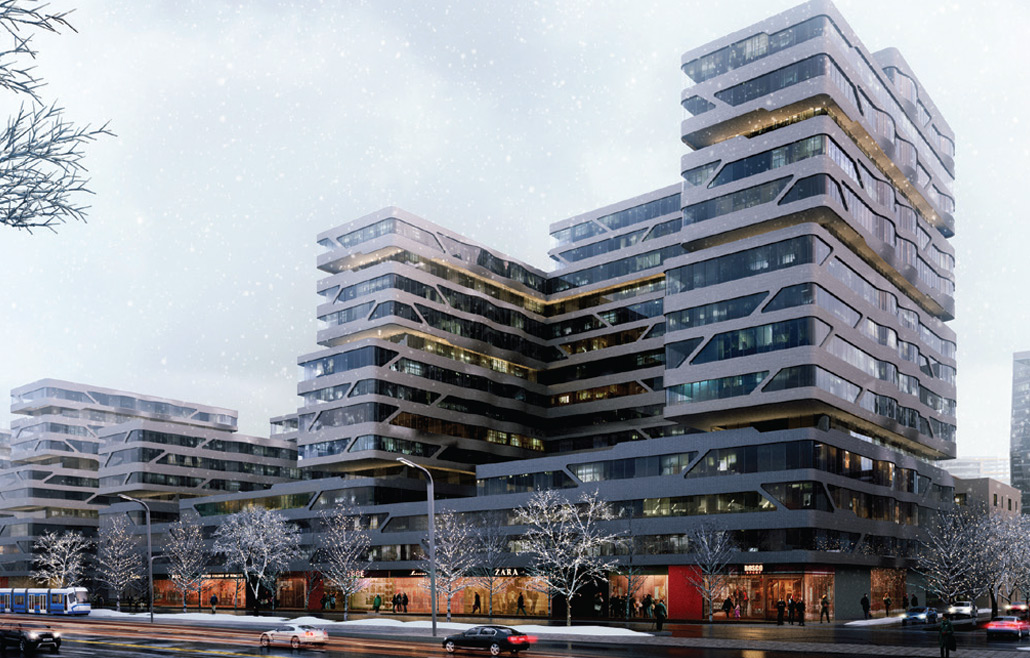
Other materials that we often incorporate into the façades for Indian projects are aluminium meshes (which are woven metal fabrics), expanded metal panels and powder-coated aluminium panels.
With such lightweight and durable materials, it is possible to offer more elaborate and eye-catching façades that are more suited to a modest project budget.
We are also currently investigating the potential for perforated Corten panels on a high-rise residential project in India as the look is rich, textured and colourful.
WFM: How are you looking at the plasticity of the material to mould the façade and then the colours and concepts?
Jonas Upton-Hansen: Plasticity and ‘materiality’ are integral to our designs and as a result, we are constantly on the lookout for materials that will help us achieve the look and capture the essence of the buildings we design. For the Michael Schumacher World Tower and St Andrew’s Tower (both in Gurgaon), we are using woven metal fabrics to create 3-dimensional ribbons that wrap the buildings. On a museum project in Scandinavia, we proposed 3-dimensional moulded plywood louvres to achieve an organic boat-like form. For other projects, we have proposed materials such as ETFE which allows for more plasticity than glass whilst still allowing significant light transmission.
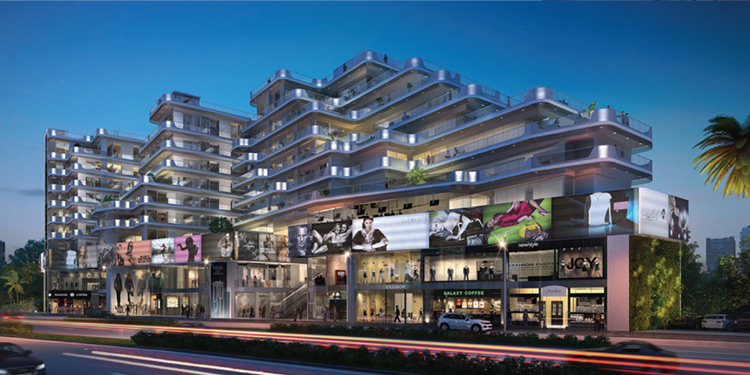
Element One: mixed-use project for Satya Group at Gurgaon
WFM: Tell us about your recent projects in India.
Jonas Upton-Hansen: We currently have over 20 active projects in India at various stages of development. We are focused mainly in Mumbai and Delhi
NCR markets but have also worked on projects in Pune and Jaipur. Most of our work in India consists of high-rise luxury residential and mixed use developments within the private sector. Our residential projects range in height from 35m to 340m and from single bungalows to 150-acre townships.
WFM: Coming to quality control (QC), what criteria do you look for while choosing glass and other materials used for façades & fenestration for various projects?
Jonas Upton-Hansen: Quality control is one of the most important factors in delivering a successful building and can often be a major concern in developing markets such as India. UHA endeavours to maximize off-site manufacturing and pre-fabrication within a controlled factory environment. A factory environment allows for QC measures that are simply not feasible on a building site, so the more building elements that can be prefabricated, the greater the possibility of a better-quality finished product. This applies not just to façades but to multiple building elements.

In order to ensure quality control UHA always insist on the following:
Detailed specifications for all aspects of the building, produced by the architect or by a professional specification writer in collaboration with the architect. The relevant section of this document should be included in any and all tender packages as a contractor requirement and should be adhered to by the contractor and all sub-trades. Detailed shop drawings are to be produced by the contractor and all subcontractors. These drawings should be reviewed and signed off by the architect before work commences.
Detailed mock-ups and samples – ideally at 1:1 scale – of critical areas of the building and façade. Building full-size mock-ups provides the architect with the opportunity to catch any design or fabrication deficiencies before the main works start and is also important for testing and performance review. The final approved mock-ups also become contractual benchmarks (control samples) that the contractor must meet or exceed on the building, thus ensuring a minimum level of quality.
These measures are standard procedures in most western markets but this is not always the case on Indian projects and thus insisting on these measures is crucial.
WFM: In India, building designers generally do not prefer uPVC for their projects; at least for upper or upper-middle-size residential projects. What is your observation on this?
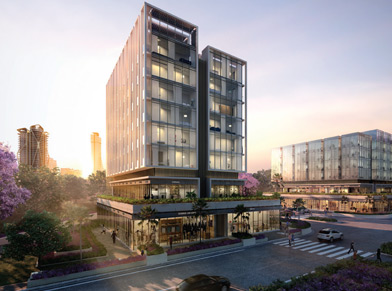
Jonas Upton-Hansen: uPVC is commonly used on lower-end developments due to its low cost – it has relatively good material properties in terms of
durability, maintenance and insulation but its aesthetic appeal is a major shortcoming as most people consider it to look both plain and cheap. This is the main reason why most designers and architects would not specify it for premium residential projects.
WFM: How important is the positioning of Windows & doors?
Jonas Upton-Hansen: Positioning of windows and doors is a crucial element of the design of a building both from a functional and aesthetic point of view. It can have a major impact on how the building looks and how occupants use the building and therefore must be considered with great care.
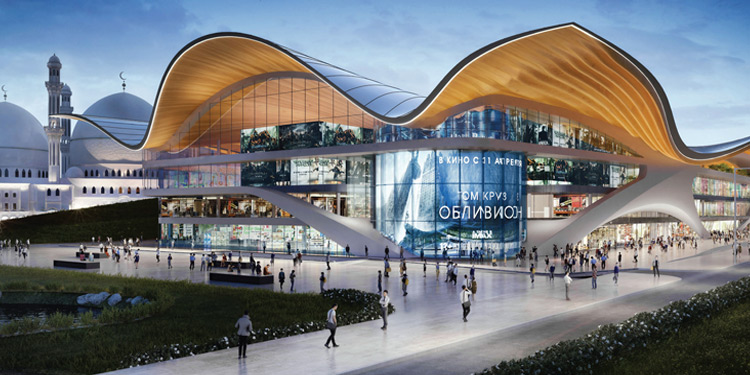
WFM: What are the hurdles faced by the building designer while collaborating on the view of the façade consultant, fabricator, contractors, etc.?
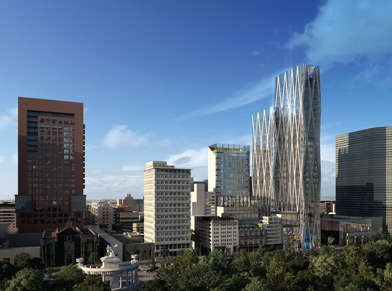
Jonas Upton-Hansen: As architects, we need to convince our clients and their appointed contractors to perhaps do things differently from what is customary or from what their competitors are doing. Fabricators, builders, and contractors are often extremely conservative and formulaic. Whilst clients often cite wanting something ‘different, innovative, cutting edge and iconic’, they are seldom willing to be at the vanguard and to try things that have not already been tested in their ’home’ market (and therefore inherently neither innovative, different nor iconic).
Typically the reason given is ‘risk’ avoidance. Our challenge therefore is to work with specialists and experts (engineers, façade consultants, etc.) to devise solutions that are innovative but at the same time limit risk. At UHA we often try to use standard construction methods in ways that are slightly different from the norm. An example of this is the Michael Schumacher World Tower where the organic and aerodynamic shape is constructed using basic shuttering systems and a standard modular window system.
WFM: What advice would you give the fabricators/ manufacturers of façade materials, doors & windows, contractors and consultants in India in terms of the following: upgrading knowledge, commercial variability, quality control and installation?
Jonas Upton-Hansen: The Construction industry is inherently slow at implementing progress and innovation and the construction process often feels antiquated when compared to other industries. Often innovations and new technologies that are cost-saving, better performing, and have less impact on the environment already exist but are slow to be adopted. The construction industry is notorious for rules, methods, and ‘taken for granted’ assumptions that prevent innovation.
It is our role and duty as architects, designers, consultants, fabricators and contractors to constantly push for more efficient, economical, and environmentally friendly ways of building. We must therefore always challenge convention, and be open to new methods, practices and materials. Innovation always implies some element of risk but often brings huge rewards. My advice would always be to learn from other industries and markets – and always keep an open mind.
